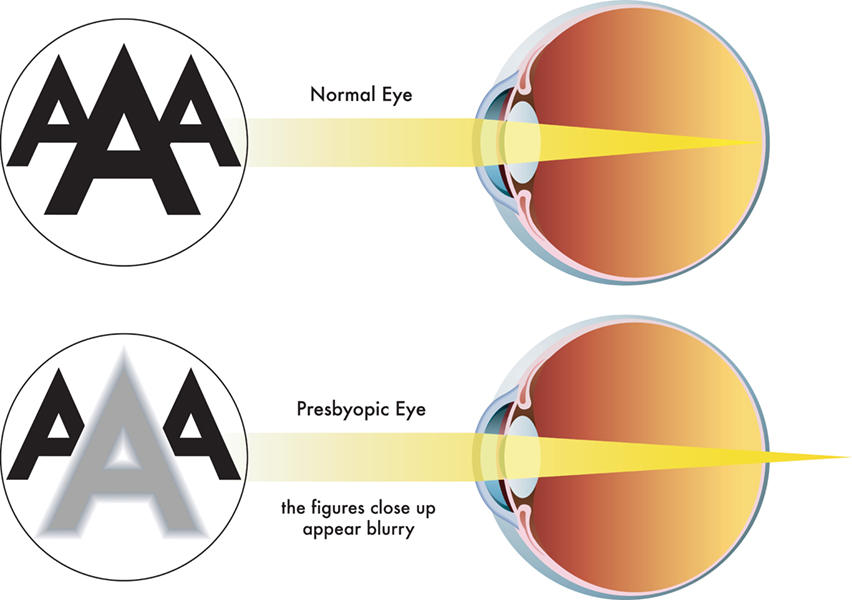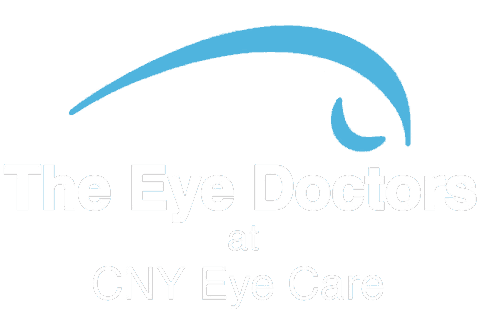Presbyopia

Presbyopia is the inability of your eyes to focus on objects up close. Presbyopia is a gradual aging process that usually becomes noticeable in your early to mid 40‘s and will continue to worsen until about age 65. You can‘t escape Presbyopia, even if you have never had a vision problem. People that are nearsighted will even notice that their near vision will blur when they are wearing their eyeglasses or contact lenses which correct their vision for distance.
Some of the first symptoms people notice are:
- Difficulty reading small print, particularly in low light conditions.
- Eyestrain or headaches associated with reading for long periods.
- Difficulty transitioning from near to distance vision.
With normal vision images are sharply focused on the retina. But if you have Presbyopia, your lens doesn‘t adjust to focus light properly, so the point of focus falls behind the retina. This makes close–up objects appear blurry.
In order to form an image your eye relies on the cornea (clear dome shaped structure on surface of the eye.) and the lens (clear structure behind the iris shaped like an M&M candy.) to refract light and focus an image on the retina.
The lens is flexible and can change shape with the help of muscles within the eye. This will allow the lens to change its focusing power giving us the ability to see clear images both near and far. As we age the lens begins to harden and becomes tess flexible, the muscles will also become weaker making the lens unable to change shape to focus on near images. When you are in your teens your lens has a lot of flexibility, this gradually lessens until in your mid 40’s when you will require reading glasses.
Although everyone will experience Presbyopia, some factors will may make you more likely to develop Presbyopia at a younger age, such as:
- Medical conditions – Diabetes, Multiple Sclerosis or Cardiovascular Diseases.
- Drugs – Certain drugs including antidepressants, antihistamines and diuretics.
Correcting Presbyopia:
- Eyeglasses are the simplest means for correcting Presbyopia. You can get eyeglasses that correct your vision only for near (reading glasses) or you can get bifocal eyeglasses which has correction for both distance and near.
- Multifocal lens implants – these implants are used for cataract or clear lensectomy surgery providing patients with distance, near and intermediate vision. This option would need to be discussed with your cataract surgeon to verify that you are a good candidate.
